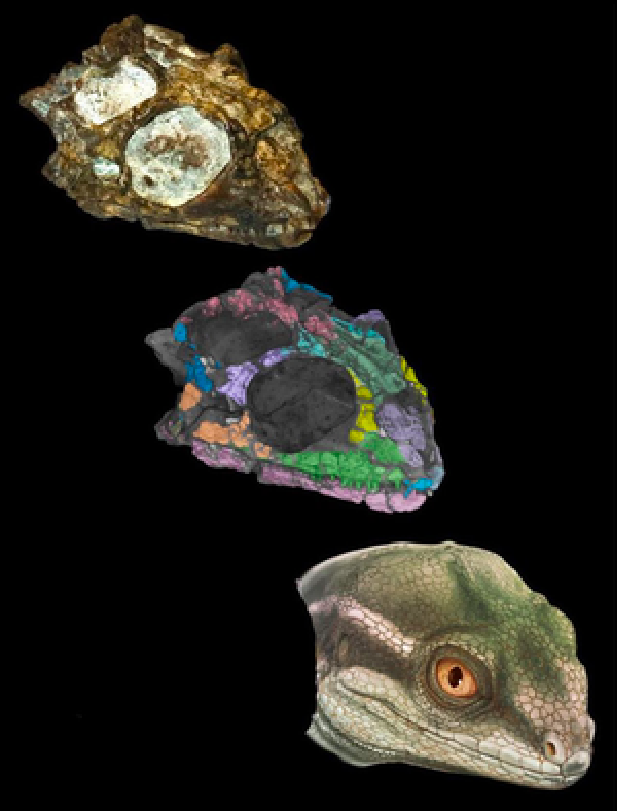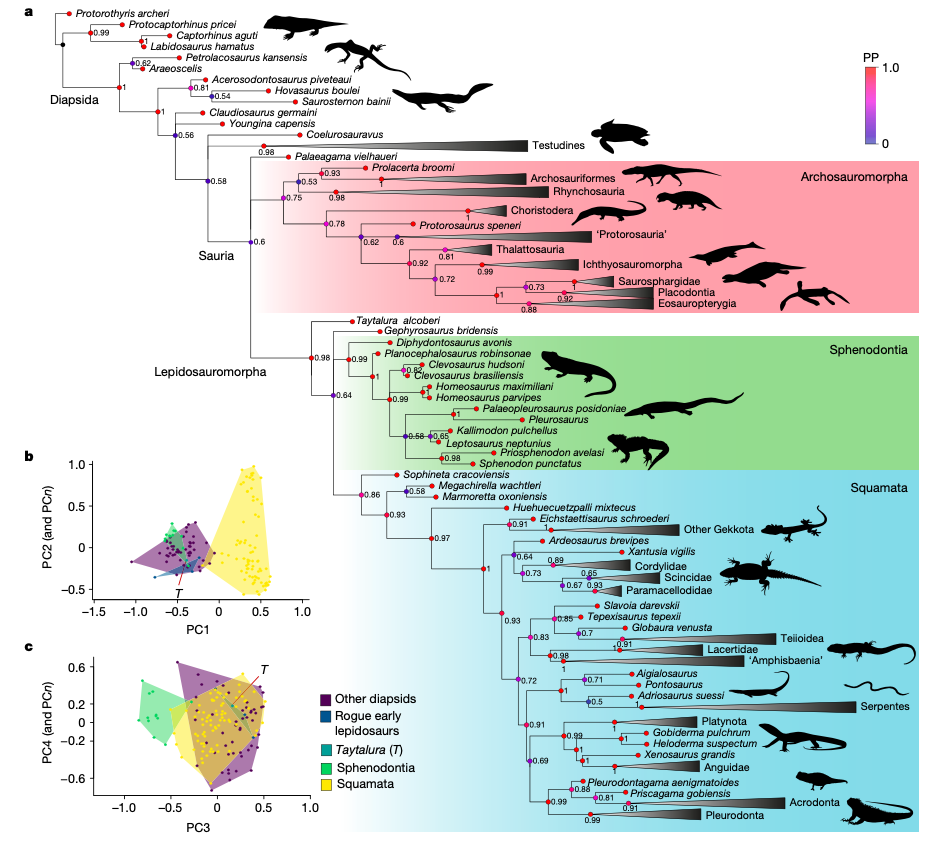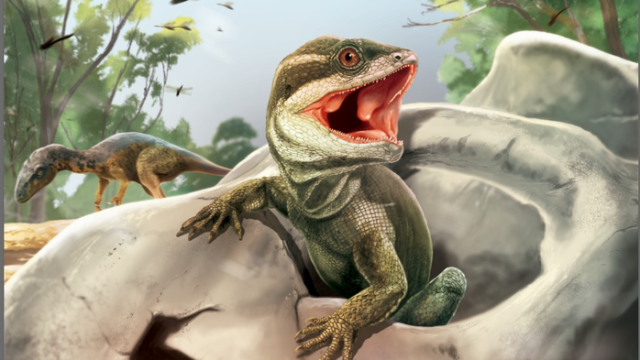Twenty years since it was found in Argentina, a fossil of a 231.4-million-year-old lepidosaur has been described in detail by palaeontologists. This animal has features place it before the split between lizards, snakes, and sphenodonts (a branch of reptiles that today only includes the strange tuatara). The fossilised skull recently underwent CT scanning, and an interdisciplinary team of researchers published their analysis of the specimen this week in Nature.
The animal is Taytalura alcoberi. To the untrained eye, it looks very much like a lizard (a rusted-over gecko, to this writer). But the animal’s anatomy is much more ancient, something the research team found out when they were able to examine the fossil in detail. None of the animal’s body was preserved, but the skull — which measures about an inch and a half long — is the most complete fossil of lepidosaur evolution yet known, said study co-author Gabriela Sobral, who supervised the CT scanning, in a Harvard press release. Seeing the skull in three dimensions provided new insights about how the skulls of modern-day snakes, chameleons, geckos, tuatara, and more were derived.
“The almost perfectly preserved Taytalura skull shows us details of how a very successful group of animals, which includes nearly 11,000 species including snakes, lizards, and tuataras, originated,” said Ricardo Martínez, the study’s lead author and a palaeontologist at the National University of San Juan in Argentina.
“Taytalura shows some features that we thought were exclusive for the tuatara group,” Martínez wrote in an email to Gizmodo. “The skull of Taytalura shows that the first lepidosaurs looked more like the tuataras than squamates, and therefore, that squamates represent a major deviation from the ancestral pattern.” Squamates are the reptile group made up of snakes, lizards, and worm lizards.
Discovered in Argentina in 2001 (“I just found it on the surface and picked it up,” Martínez said), T. alcoberi is what the researchers call a “stem species,” a term for animals that branched off the evolutionary tree before the lineages that persist to the present day. In other words, they’re earlier evolving species that have no living descendants. T. alcoberi is an evolutionary offshoot that indicates what life looked like before lepidosaurs split into two groups: the squamates and the sphenodonts. Though T. alcoberi is younger than some lizards — the earliest squamate and sphenodont fossils date to 242 million and 238 million years ago, respectively — its morphology is more ancient. Dating to the Triassic, the reptile precedes Tyrannosaurus rex by over 150 million years.

T. alcoberi had some features that indicated to Tiago Simões, an evolutionary biologist at Harvard University and a co-author of the paper, that it was special. It lacked a snout opening common in archosaurs, the evolutionary lineage that includes crocodilians and dinosaurs. Its quadrate bone, which connects the skull to the lower jaw, had a peculiar shape. But the CT scan really drove things home: The animal had bones mutually exclusive to both squamates and sphenodonts.
The tuatara, a modern lizard species endemic to New Zealand, has been the only living sphenodont on Earth for some 60 million years. For its relatively unchanged anatomy through the ages, the tuatara is often called a “living fossil.” And T. alcoberi corroborates that label, with the fossil animal more closely resembling the tuatara than chameleons, legless lizards, and snakes.
Simões applied a Bayesian analysis to place the fossil in the evolutionary tree. The modelling meant the research team could estimate when specific adaptations developed in lepidosaurs and how fast they changed. The Bayesian method confirmed to the team that T. alcoberi is the most primitive known member of the reptilian lineage from which all lizards and snakes emerged.
“In science, we never seek true answers or proofs because the very basic premises of science prohibit the existence of true answers … by principle, those trees are never correct, and they frequently change over time. But if after future analyses, and perhaps new data, the placement of Taytalura remains the same, it may cement our ideas in this paper as a new theory for the origin of lepidosaurs,” Simões said in an email to Gizmodo.

The fossil is a big step toward understanding today’s reptiles; in other words, the ones that didn’t go down with the dinosaurs. Excluding crocodilians, many of these animals were on the smaller side, dwelling in the shadows of giants for millions of years.
“We are accustomed to accept that the Mesozoic Era was an age of gigantic reptiles, enormous proto-mammals, and huge trees, and thus we commonly look for fossils that are visible at human height, just walking. However, the largest part of the ancient ecosystem components was small, as today. There was a universe of fauna sneaking among bigger, clawed or hoofy paws,” said co-author Sebastián Apesteguía, a paleontologist at Maimónides University in Buenos Aires, in a press release.
It’s always cool to see some newly discovered twig on life’s tree, but perhaps even cooler to see clues about how entire branches sprouted to begin with. T. alcoberi is exactly that; a pint-sized remnant of a big rift between reptiles.
